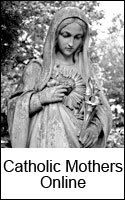
My maternal great-great-great-grandfather came from County Galway, near the town of Loughrea. He and his wife had 16 children; 12 lived to adulthood and emigrated to America in the 1840s during the potato famine. They lived in a very small home (shown below), which has now been nicely refurbished and converted into a garage.

Although St. Brendan's Cathedral was not built until nearly 50 years after my ancestors lived there, I visited it a few years ago when I was in the area and some of my distant relations belong to this parish. It is the centerpiece of the town. If you are interested in architecture or stained glass, this is one cathedral to visit if you are ever in County Galway. It is filled with Celtic Revival sculpture, stained glass, woodcarving, metalwork and textiles.


St. Brendan’s Catholic Cathedral in Loughrea is arguably one of the country’s greatest contributions to European art of the twentieth century. It is an absolute must for anyone interested in modern Irish stained glass. The building was designed by William Byrne in 1897, and completed five years later. Its only unusual architectural features are its double transepts. But it is the decoration of the church interior that makes a visit such an enriching and spiritual experience. To explain its significance, one must realise that it was the result of a uniquely successful cooperation between an enlightened clergy who were prepared to reject tradition in favour of experimentation, and a vigorous and visionary layman who wanted to have Irish churches decorated by Irish artists and craftspeople, instead of being filled by outmoded foreign furnishings. That layman was Edward Martyn, who was born in Loughrea Parish. He was as passionate about setting up the Palestrina Choir and the Abbey Theatre in Dublin, as he was in assuring the creation of a new school of stained glass in Ireland, which in turn, was to lead to the opening of An Túr Gloine. It became one of the most influential stained-glass studios in the Ireland of the first half of the twentieth century. Trained teachers in this field were lacking in Ireland, so Martyn got English experts such as Whall and Childe to come and instruct budding Irish artists. It was these Englishmen who supplied some of the earliest windows, influenced by the Arts and Crafts movement in England. But the earliest window of all was by Sarah Purser, foundress of An Túr Gloine, and it was this studio which was to provide most of the windows over a period of fifty years, including Michael Healy’s marvellous Ascension and Last Judgment of 1936-40 in the West Transept. But Loughrea has a treasury of other crafts as well. The John Hughes statue of the Virgin and Child on a side altar is a symphony of controlled movement. One has to go back seven hundred years to find parallels for the remarkable series of historiated capitals by Michael Shortall telling of the adventures of St. Brendan, and of events in the history of the diocese of which he is patron. (Two of the capitals left uncarved by Shortall were completed by Tom Glendon in 2003, to mark the centenary of the cathedral.) Shortall was also responsible for the attractive bronze angels in the altar rails. Their marble accompaniments display Celtic motifs which remind us of the revival of ancient Irish patterns that were all the rage at the time. Metalwork designed by William Scott, and admired by the poet T.S. Eliot, is also in evidence.
Below is the Ascension by Michael Healy and St. Brendan by Sarah Purser





















No comments:
Post a Comment